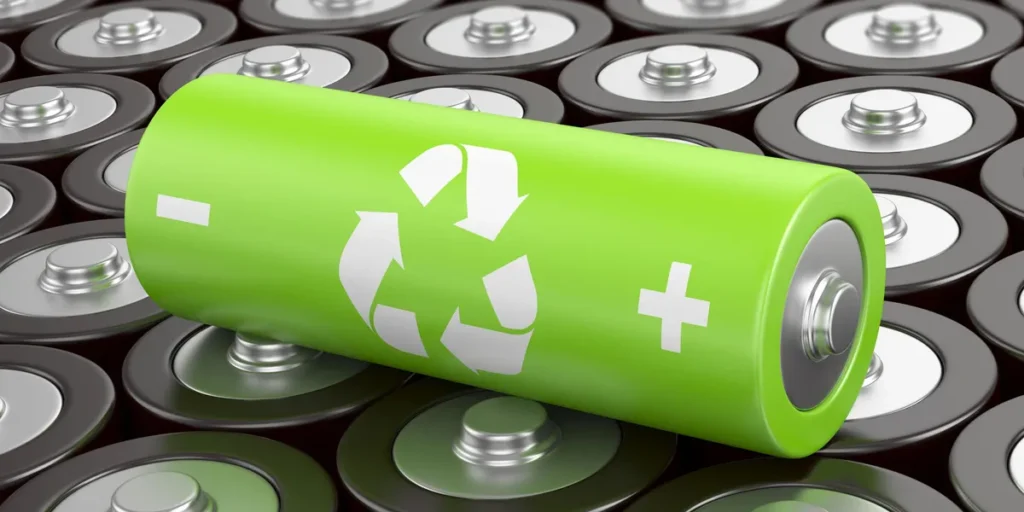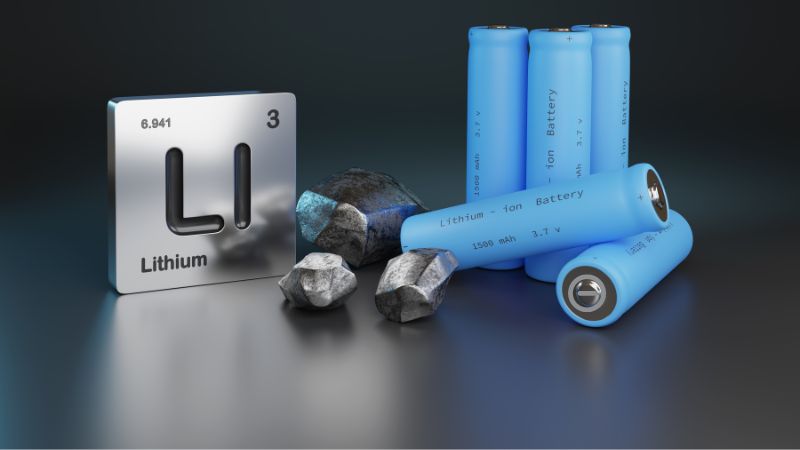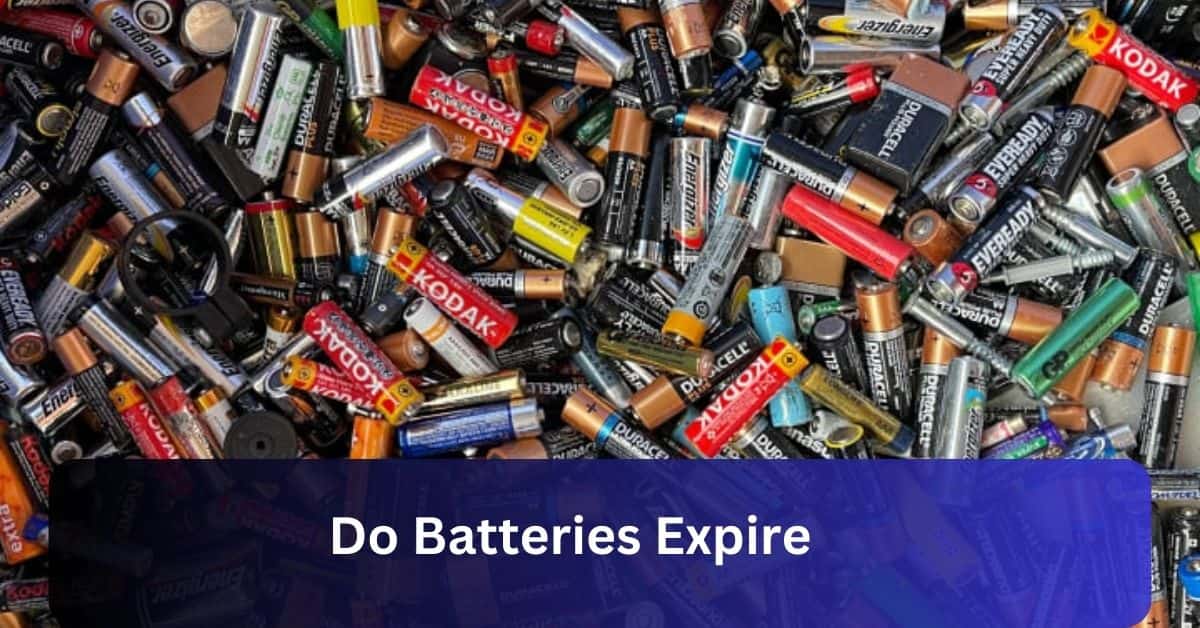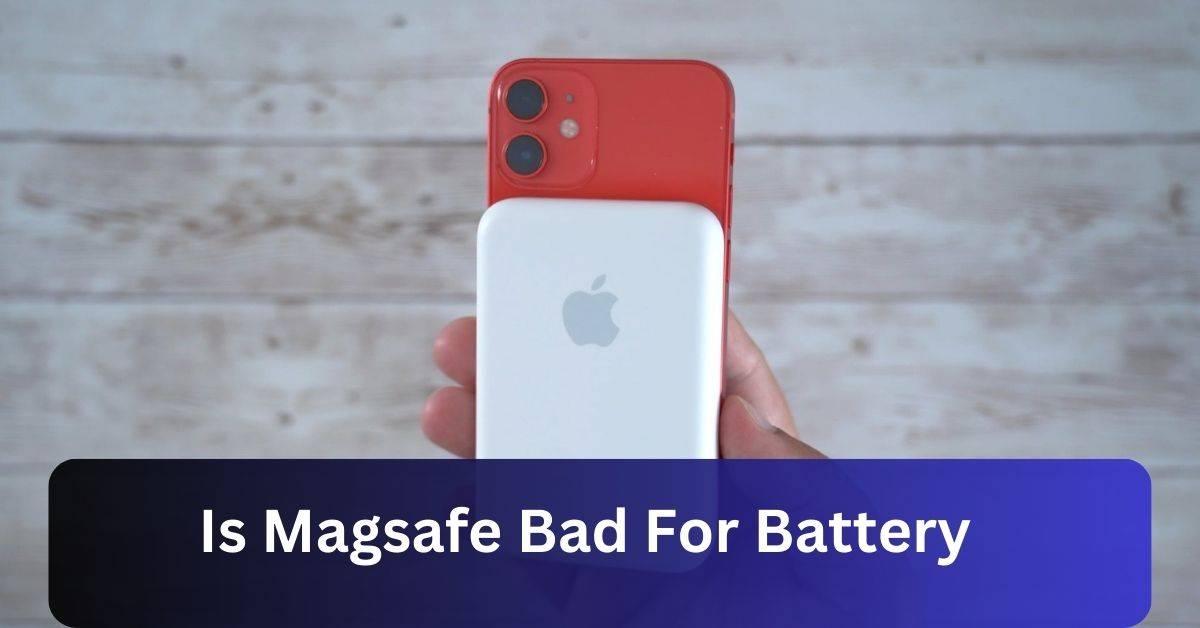Yes, lithium batteries can be recycled using special methods that recover valuable materials like lithium, cobalt, and nickel. Recycling reduces lithium-ion battery environmental impact and resources, making it an essential practice for sustainable battery use.
Lithium battery recycling won’t just be a nice option it will be essential to meet growing demand and reduce emissions from sourcing materials. In this article, we explore how lithium battery recycling works.
Are Lithium-Ion Batteries Recyclable?
Yes, both lithium and lithium-ion batteries can be recycled, but they are different types. Lithium batteries can’t be recharged, but lithium-ion batteries can be. Right now, only about 5% of lithium-ion batteries are recycled worldwide, while lead-acid batteries have a much higher recycling rate of 99%.

There are a few reasons for the low recycling rate of lithium and lithium-ion batteries:
Complexity: Lithium is highly reactive, making the recycling process challenging and requiring careful handling.
Cost: Although valuable materials like lithium, cobalt, and nickel can be recovered, recycling is currently more expensive than mining new raw materials.
New Technology: Lithium-ion batteries have only been around since 1991, so the recycling infrastructure is still developing. In contrast, lead-acid batteries have been around since 1860, giving more time to build an effective recycling system.
Can the Material Lithium Be Recycled?
Yes, lithium can be recycled from used batteries. During the recycling process, lithium is recovered along with other valuable materials. This not only cuts down on the need to mine new resources but also helps reduce pollution in the environment.
As the demand for batteries increases, recycling lithium becomes crucial for conserving resources and supporting sustainable energy solutions worldwide.
Read Also: How Long Does An Auxiliary Battery Last – Explore Maintenance Now!
Parts of a Lithium Battery
Anode:
The anode is a key part of a lithium battery. It stores lithium ions when the battery is charged and releases them when used. Typically made of graphite, the anode helps move electricity through the battery, making it essential for powering devices like phones and laptops.

Cathode:
The cathode is an important part of a lithium battery. It stores lithium ions when the battery is charged and releases them during use. Usually made of metal oxide, the cathode helps conduct electricity and is crucial for the battery’s performance in devices like smartphones and laptops.
Separator:
A lithium battery has a thin, insulating layer that keeps the anode and cathode from touching each other. It prevents them from touching each other and causing a short circuit. Made of a special material, the separator ensures the battery operates safely and efficiently.
Electrolyte:
The lithium battery is a liquid or gel that helps lithium ions move between the anode and cathode in an electrolyte. It allows the battery to conduct electricity and power devices. Without the electrolyte, the battery wouldn’t work properly or safely.
Positive and negative current collectors:
A lithium battery’s positive and negative current collectors are metal plates that gather and transfer electrical energy to and from the anode and cathode. The positive collector connects to the cathode, and the negative collector connects to the anode.
Read Also: Do You Tip Autozone For Battery Replacement – Details 2024!
How Lithium-Ion Batteries Are Recycled?
Discharging:
It means safely removing any stored electrical energy from the batteries before they are processed. Proper discharging ensures a safer and more efficient recycling process.

Shredding:
The process of shredding involves cutting lithium-ion batteries into small pieces. This breaks down the battery components, making it easier to separate and recover valuable materials like lithium, cobalt, and nickel. Shredding is a crucial step for efficient and effective recycling of these batteries.
Melting:
Heating shredded lithium-ion batteries to high temperatures turns the materials into a liquid. This process helps separate and collect valuable metals like lithium and cobalt. Melting the materials makes it easier to recover these metals for reuse in new batteries and other products.
Dissolving:
In the recycling process, the battery materials are mixed with special chemicals that dissolve them. This helps separate valuable metals like lithium and cobalt from other substances. Dissolving makes it easier to recover these important materials for reuse in new batteries and other products.
Reprocessing:
The process involves taking the separated metals and refining them to remove impurities. This makes the materials pure and suitable for making new batteries or other products.
SLI vs. Lithium Battery
SLI batteries, used in cars, are lead-acid batteries known for their reliability and low cost. Lithium batteries, on the other hand, are lighter, last longer, and charge faster. While SLI batteries are common for starting vehicles, lithium batteries offer better performance and efficiency for various applications.
What is the biggest problem with lithium batteries?
The biggest problem with lithium batteries is their risk of overheating and catching fire if damaged or improperly handled. They can also be expensive to recycle, and disposing of them incorrectly can harm the environment. Ensuring safe use and proper disposal is crucial to managing these risks.

How bad are lithium batteries for the environment?
Lithium batteries can harm the environment if not recycled properly. Mining for lithium can damage ecosystems, and improper disposal can lead to pollution.
However, recycling helps reduce these impacts by recovering valuable materials and lowering the need for new resources. Safe handling and recycling are key to minimizing environmental harm.
Is mining lithium worse than fossil fuels?
Mining lithium has environmental impacts, like habitat destruction and water use, but it’s generally less harmful than fossil fuels. Fossil fuel extraction and burning cause more pollution and contribute significantly to climate change.
While lithium mining has challenges, it supports cleaner energy solutions like electric vehicles, which help reduce overall emissions.
The Future of Lithium Battery Recycling
Lithium batteries have important materials like lithium, nickel, and cobalt that can be recycled for new batteries. Using recycled materials reduces the carbon footprint by about 25% compared to using new materials.

Recycling also saves money, with the value of recovered materials expected to reach $600 per ton by 2025. As electric vehicles and long-lasting batteries become more popular, recycling these batteries will help reduce costs and environmental impact.
Frequently Asked Questions:
1. What percentage of a lithium battery can be recycled?
Up to 95% of a lithium battery can be recycled. Recycling helps reduce waste and supports the production of new batteries, making it an important part of battery management.
2. Why is it important to recycle lithium batteries?
Recycling lithium batteries is important because it helps recover valuable materials, reduces environmental pollution, and saves resources. It also prevents hazardous waste from harming the environment, making it a crucial step for sustainability and efficient battery use.
3. What challenges are associated with recycling lithium batteries?
They face challenges like high costs, complex processes, and the need for special equipment. Additionally, handling and safely managing the batteries to avoid risks like fires can be difficult, making effective recycling more challenging.
4. Is recycling lithium batteries profitable?
Lithium batteries can be profitable due to the valuable materials, like lithium and cobalt, that can be recovered and reused. Although the recycling process is costly and complex, advancements in technology and increasing demand for these materials are improving profitability.
5. Does Home Depot recycle lithium batteries?
Yes, Home Depot offers recycling for lithium batteries. They provide designated bins in stores for dropping off used batteries. This service helps you safely get rid of batteries and recover valuable materials, which supports protecting the environment and promoting sustainability.
Conclusion:
In conclusion, recycling lithium batteries is crucial for managing resources and protecting the environment. While challenges exist, such as high costs and complex processes, advancements in technology and growing demand make it increasingly important.





